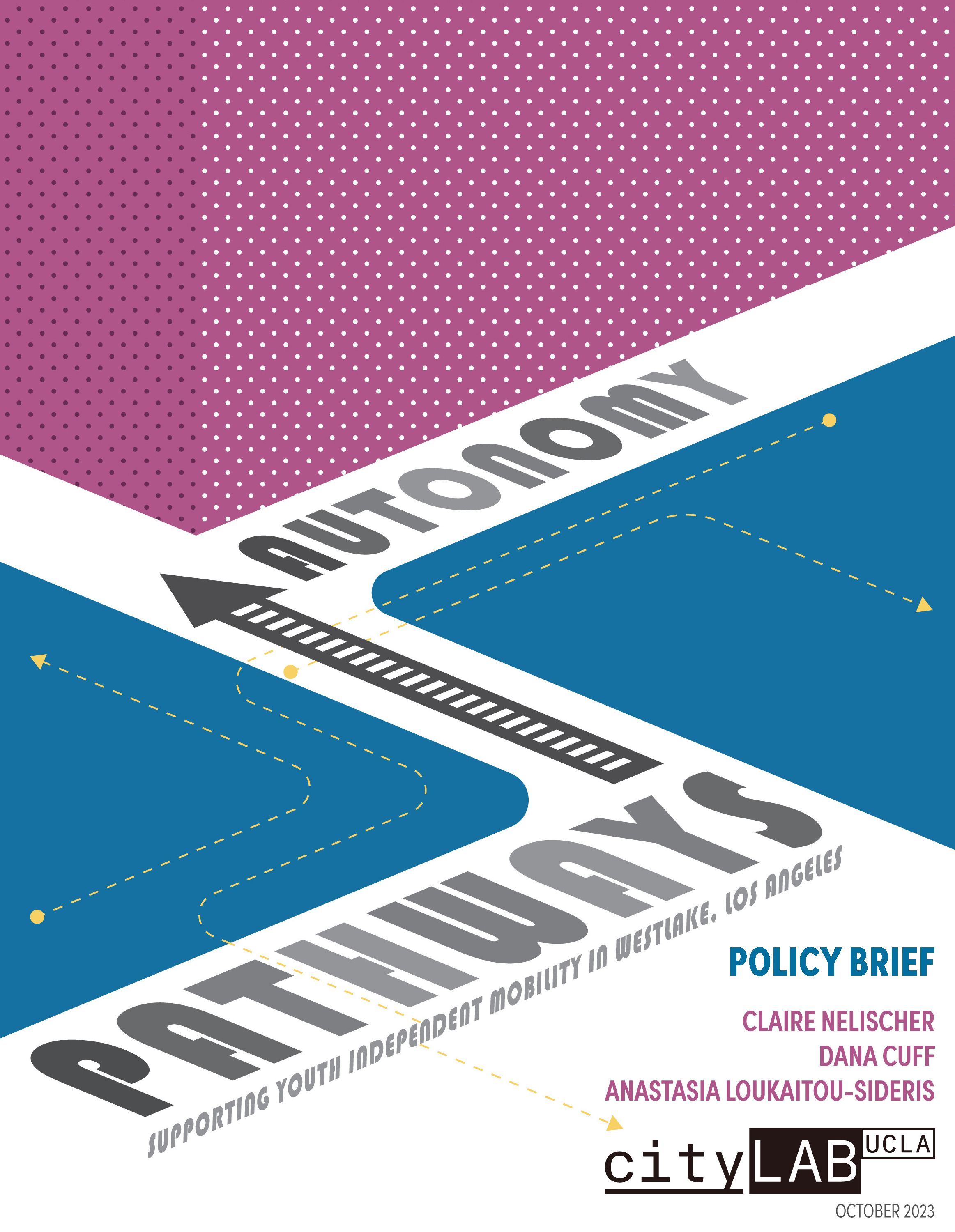Date: October 1, 2023
Author(s): Claire Nelischer, Dana Cuff, Anastasia Loukaitou-Sideris
Abstract
Each day, youth in Los Angeles venture out on their own to move to and from home, school, and after-school activities. Their travels represent important pathways to autonomy, agency, and urban citizenship, which a city can support with safe, pleasant paths that offer reassuring familiarity and opportunities for socializing.
About the Project
Youth in dense, central neighborhoods often walk to school and are likely to be impacted by unsafe streets with higher proportions of pedestrian-automobile crashes. Despite Vision Zero and Safe Routes to School programs, they remain disproportionately represented among traffic fatalities, which are the highest in a decade. For these youth, social danger influences their choice to frequent traffic-heavy streets, as these arterials are perceived safer for walking than the quieter, desolate residential streets. Youth’s urban paths are informed by “hot spots” (where crime and crash data indicate danger) as well as “safe spots” (where data indicate safety from crime and vehicular injury) which, when combined with youth perceptions, impact routes to and from school.


